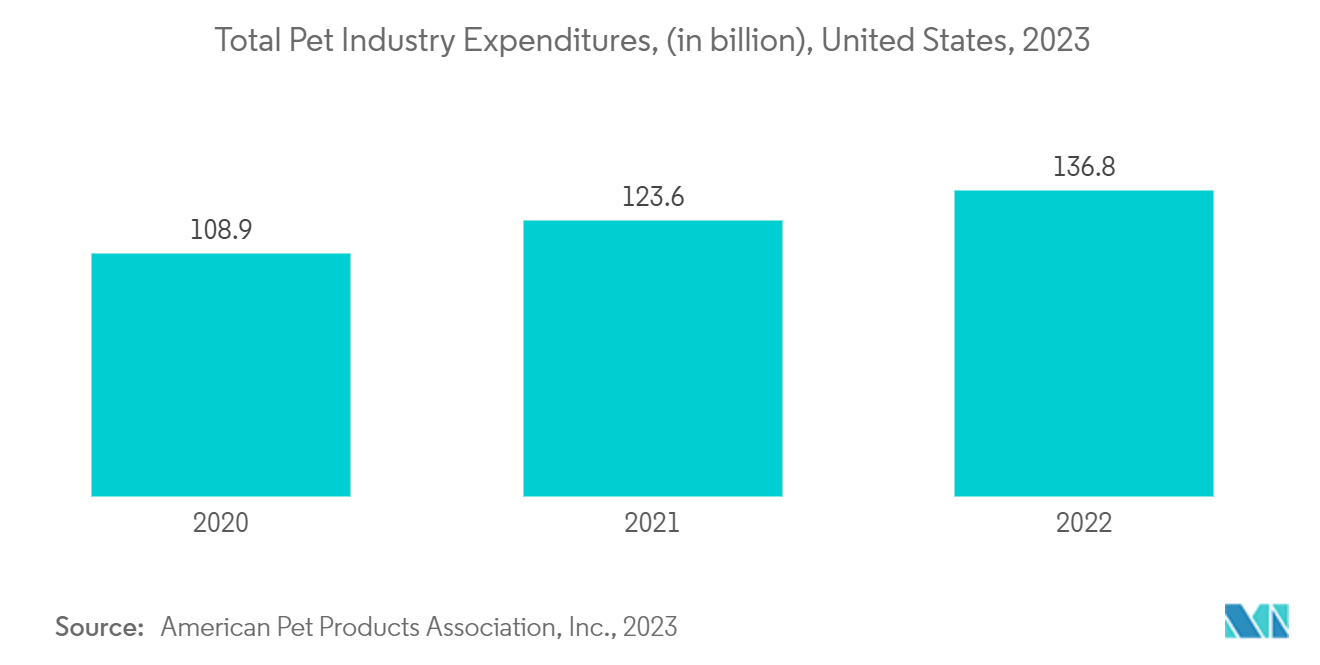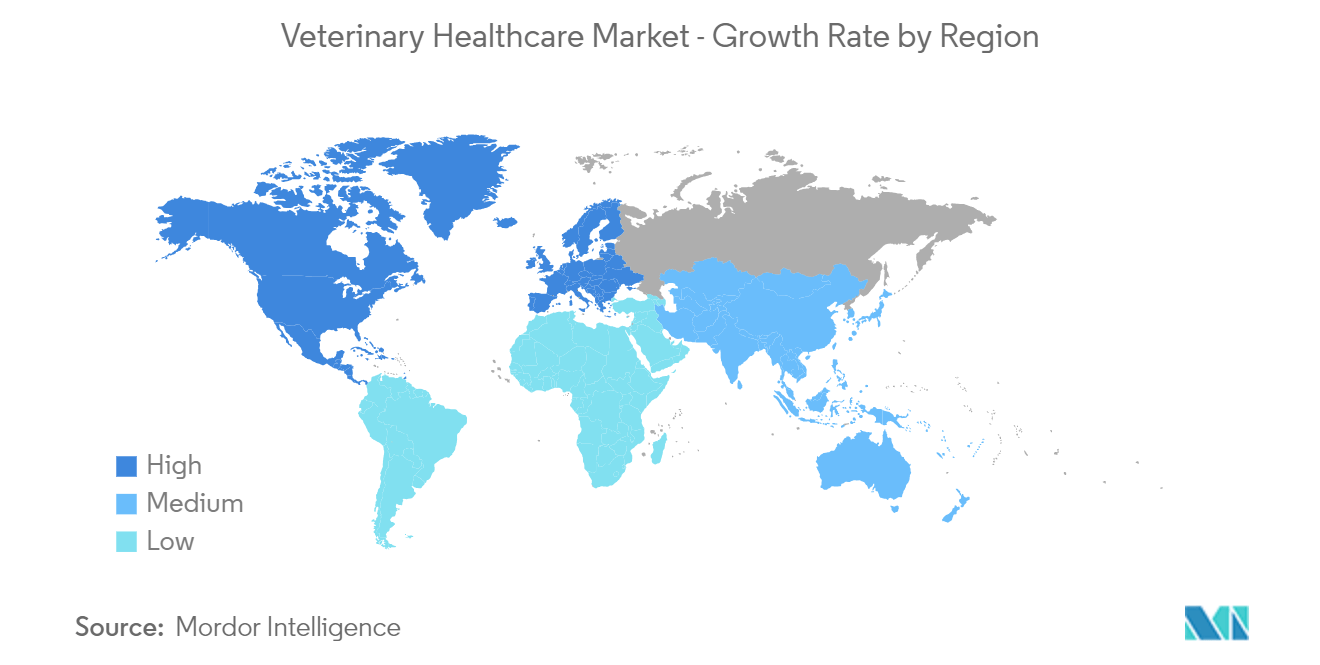Market Trends of Veterinary Healthcare Industry
The Vaccine Segment Expected to Hold a Significant Share Over the Forecast Period
Vaccines are comprised of viruses, bacteria, or other disease-causing organisms that have been killed or altered so that they cannot cause any disease. The primary goals of veterinary vaccines are to improve the health and welfare of companion animals, increase the production of livestock in a cost-effective manner, and prevent animal-to-human transmission from both domestic animals and wildlife. Factors such as the rising prevalence of zoonotic diseases, increasing cattle population, increasing pet adoption rates worldwide, and new product launches are expected to boost the segment growth during the forecast period.
The growing number of cattle populations worldwide, prevalent in several bacterial and viral diseases, is likely to boost the segment’s growth. For instance, according to the UN Food and Agriculture Organization data published in July 2023, there were 1.52 billion cattle worldwide in 2022. The escalating global cattle population, coupled with their susceptibility to various bacterial and viral diseases, is anticipated to drive the growth of the vaccine segment over the forecast period. Additionally, various initiatives taken by the government to vaccinate animals against various diseases are expected to boost the segment’s growth. In January 2022, Indonesia initiated a statewide livestock vaccination program as the number of cattle infected with foot and mouth disease increased to more than 151,000.
Market players are developing and launching new vaccines and increasing strategic activities globally to enhance their market presence. For instance, in June 2023, Merck Animal Health launched the Circumvent CML vaccine. It is a three-in-one vaccine for Porcine Circovirus Type 2a (PCV-2a), Porcine Circovirus Type 2d (PCV-2d), and Mycoplasma hyopneumoniae and Lawsonia intracellularis. In addition, in January 2023, Merck Animal Health opened a state-of-the-art manufacturing facility in Boxmeer, the Netherlands, for Companion Animal vaccines. The location is part of a manufacturing network in the Netherlands, including existing production and research facilities in Boxmeer. This new manufacturing unit was expected to help the company expand its veterinary vaccine market across Europe.
Therefore, the rising prevalence of zoonotic diseases, increasing cattle population, increasing pet adoption rates worldwide, and increasing product launches and strategic activities by market players are expected to drive the vaccine segment during the forecast period.

North America is Expected to Hold the Largest Market Share over the Forecast Period
North America is one of the most developed regions in the world. It currently holds the major share of the veterinary healthcare market, and it is expected to follow the same trend over the forecast period. With increasing initiatives by various organizations in North American countries and high pet adoption, the market is expected to record strong growth.
Increasing initiatives by various organizations and high pet adoptions are expected to boost the market’s growth. For instance, according to Pet Food Industry data, in 2022, around 398,477 dogs were adopted compared to around 393,712 dogs adopted in 2021. Similarly, 528,526 cats were adopted from shelters in 2021, rising to 539,015 in 2022. The adoption rate for dogs and cats grew by 1.2% and 2%, respectively, in 2022 compared to the adoption rate in 2021. The rising adoption rate of pets implies increased expenditure on pet health by new owners, which is expected to drive the veterinary health market during the forecast period.
In August 2022, the California Animal Welfare Funders Collaborative (CAWFC) awarded USD 300,000 in grants to 19 organizations to provide pets with proper food, medicines, and diagnostics as required. Additionally, according to Canadian Animal Health Institute 2023 statistics, pet ownership in Canada increased throughout the pandemic, with 60% of households reporting ownership of at least one cat or dog. During 2020-2022, the number of pets in Canada increased from 7.7 million to 7.9 million for dogs and from 8.1 million to 8.5 million for cats. Also, pet healthcare expenditure increased, with 17% of owners willing to spend more than USD 500 every year for their pet healthcare. The rising pet adoption and increasing willingness to spend more on pet healthcare are expected to boost market growth during the forecast period.
Strategic initiatives by market players are expected to propel market growth in the region during the forecast period. For instance, in September 2022, Boehringer Ingelheim pledged to donate approximately 100,000 doses of rabies vaccination to help prevent rabies in dogs. The donation was expected to be used in tribal territories and underserved communities across the United States as part of the relaunched SHOTS FOR GOOD program.
Therefore, owing to the aforementioned factors, such as the rising pet adoption in North America, increasing per capita animal healthcare expenditure, and increasing product launches, the demand for veterinary products is expected to increase in North America, enhancing the growth of the market in North America.


